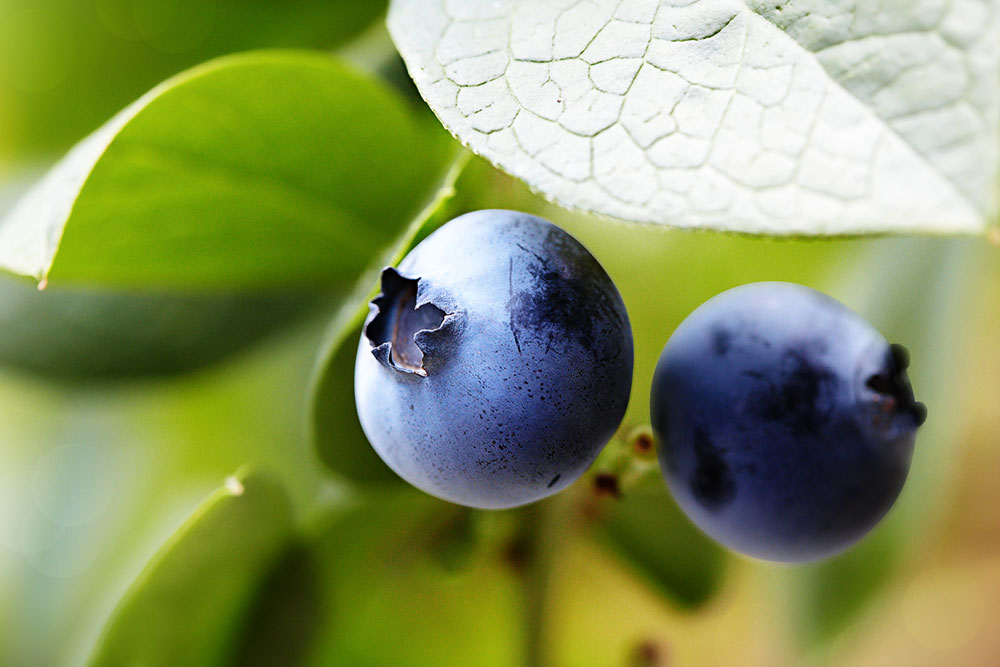A Guide to Fertilizing Blueberry Plants
Blueberries are known to be one of the easiest fruits to grow, especially for home gardeners. These perennial bushes do not require a berry trellis, which is usually needed for other types of berries like blackberries and raspberries. Besides, blueberry bushes are quite hardy and robust with simple care routines and do not require much space. However, these plants are quite sensitive to over-fertilization. Here are key things to know about fertilizing blueberry plants.

Benefits of using fertilizers on blueberry plants
Here are some reasons why one should consider using fertilizers on blueberries.
- Better growth and development of the bushes
Proper fertilization is crucial to ensure the plant receives essential nutrients such as nitrogen, phosphorus, and potassium. These nutrients provide the plant the necessary support for effective root development, stem growth, and the development of healthy foliage. - Improved fruit yield
When blueberry bushes receive sufficient fertilization, they are capable of producing increased fruit yield. This is because fertilization increases the nutrient content in the soil, which invariably helps the plant to have better flowering, fruit set, and fruit development. As a result, the bushes produce a larger amount of berries. - Protection against disease and stress
Fertilizers are like food for the blueberry plants. If the right amount and type of fertilizer are added to the soil on a timely basis, the blueberry plant will have a stronger immune system. As a result, it is able to withstand most of the environmental stresses, including extreme temperatures and common plant diseases such as drought, powdery mildew, and other diseases. The plant will be less susceptible to common pests and insects.
Cost of blueberry fertilizers
The cost of fertilizing blueberry plants often varies based on the brand, quantity, and type of the fertilizer. For liquid fertilizers, the cost can start at around $30 for a quart. On the other hand, granular fertilizers are comparatively cheaper, with prices starting at approximately $16 for a 5 lb bag of fertilizer. Apart from this, organic fertilizers may cost more due to the use of specialized formulations and nutrient concentration.
The overall cost of fertilizers is expected to increase annually. For instance, during the first year of cultivation of blueberries, approximately $120 worth of fertilizers may be required for every acre. Subsequently, the total price may increase to around $170 per acre for the second year. From the third year onwards, the total annual cost of fertilizers per acre may jump to around $350. Based on these estimates, one can plan the budget and purchase the necessary amount of fertilizer accordingly.
Stages of blueberry plant growth and fertilizer usage
It is important to fertilize blueberry plants at the right time for optimal growth and fruit yield. The ideal time is at the start of the plant and berry growth cycle. This means the blueberry plant should be fed three times a year for best results.
- Early spring
As the spring season approaches, the blueberry plant begins its growth phase. Experts suggest that the best time to add fertilizer is between March and April, just before the buds start to open up. - Late spring/early summer
After the initial round of fertilization, it is recommended to wait for six weeks before applying the second round of fertlizers. This promotes the healthy growth of leaves and berries. - After harvest
When the berries are picked in June and July, the third dose of fertilizers needs to be added to the soil. This process provides the plant with the necessary nutritional boost to restore its strength.
Right amount of fertilizers
Blueberry plants are highly sensitive to over-fertilization. Therefore, it is important to apply the right amount of fertilizer to the blueberry bushes. Excess fertilizer can cause several problems, including the growth of excess branches that hinder berry production or soil rotting due to high salt levels. The amount of fertilizer required typically depends on the stage of maturity of the blueberry plant. As the plant gets older, an increased amount of fertilizer is required for proper fruit growth. As a result, the total cost of fertilizer increases over the years.
Here are a few tips to determine how much fertilizer is required to add to the plant.
- For plants in their first and second years, it is recommended to use only half the fertilizer suggested on the label for mature plants.
- For plants in their third year, it is enough to apply about ¾ the amount of fertilizer recommended for mature plants, as indicated on the packaging.
- For plants that are four years old or older, they are considered fully mature and it is recommended to use the full amount of fertilizer as suggested on the label.
Top fertilizers for blueberries
Most fruit crops, including blueberries, require annual applications of nitrogen-based fertilizers to support the proper growth of the fruits, roots, and leaves. Since blueberry roots are prone to damage, it is recommended to use fertilizers that release nitrogen from sulfur-coated urea, urea, ammonium sulfate, and cottonseed meal. In most cases, a fertilizer that has been developed for acid-loving plants with a 7-7-7 or 4-3-4 ratio works well for blueberries, too.
However, chemical-based fertilizers are usually insufficient to obtain a good crop of blueberries. To provide the soil with proper nutrients, it is necessary to supplement it with homemade blueberry fertilizers. Below are some commonly used homemade blueberry fertilizers that can help the blueberry bushes thrive.
- Coffee grounds
- Eggshells
- Epsom Salt
- Cow manure
- Composted dairy manure
- Composted chicken manure
- Compost made from rotten yard debris and vegetable waste